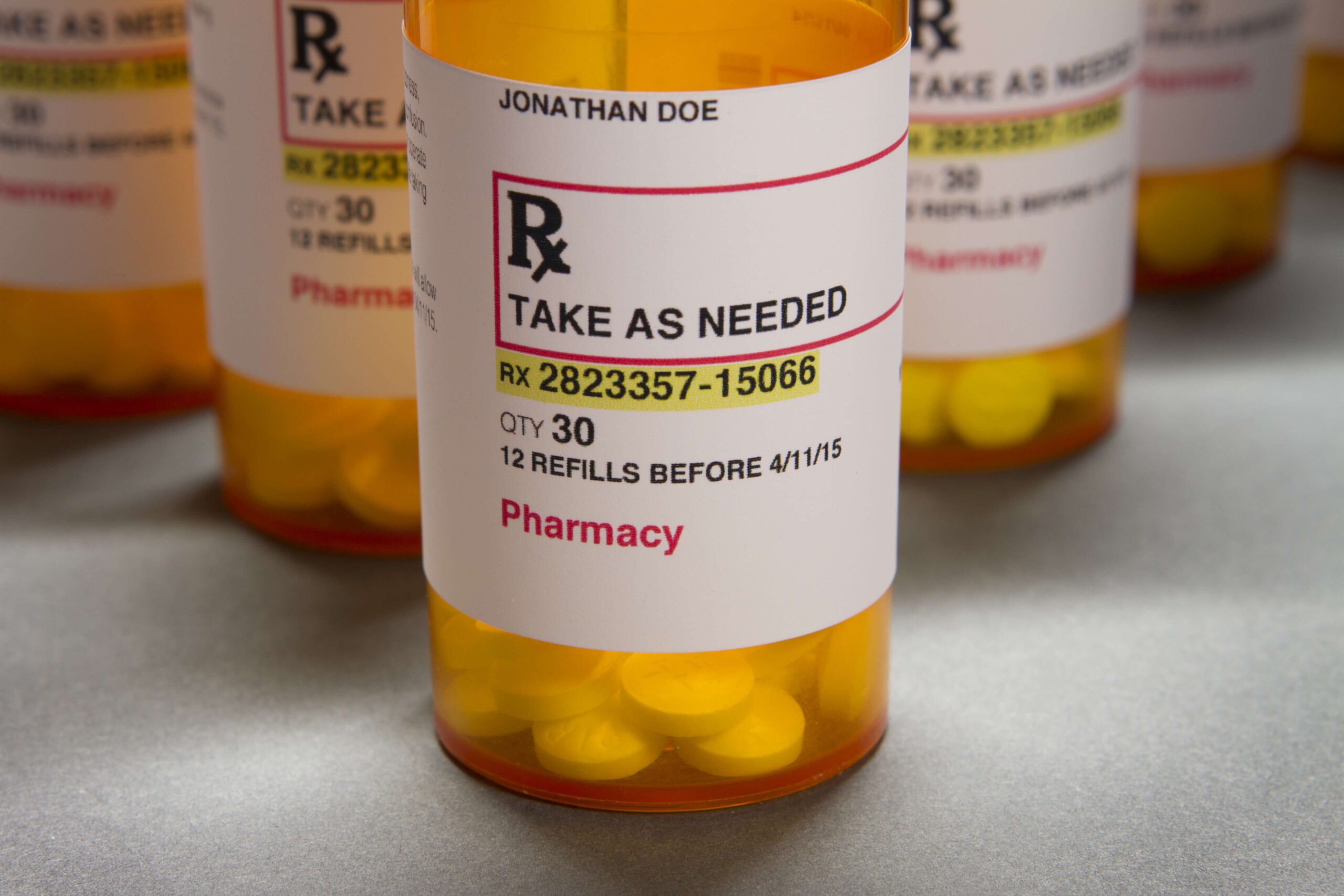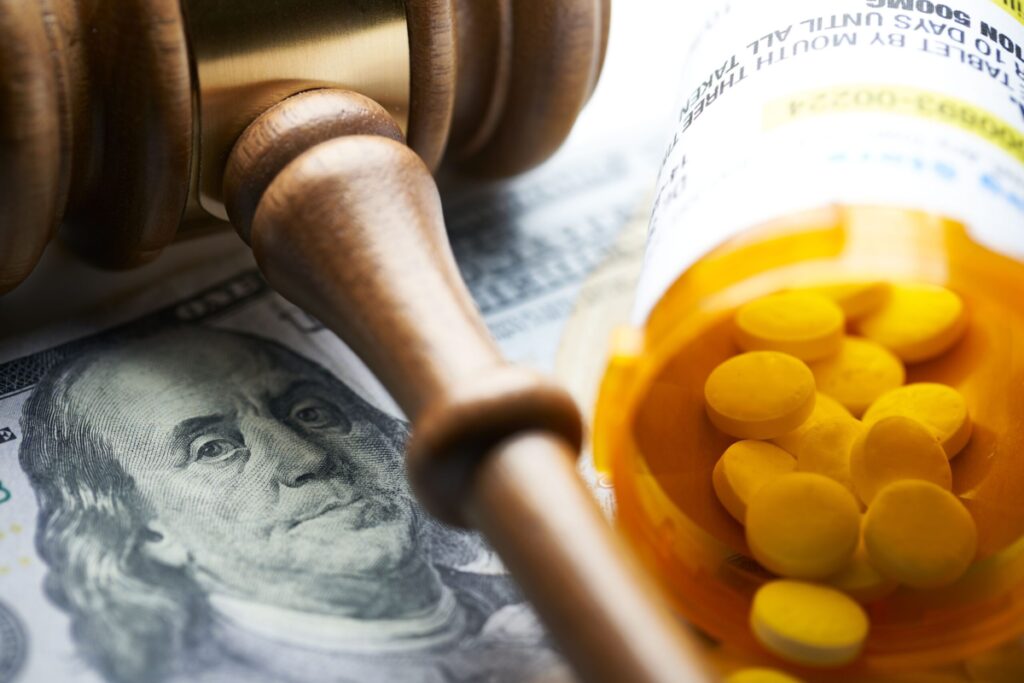If you’re working to control the cost of prescription drugs, you need to know the lingo used by the pharmaceutical industry. Below is a glossary of terms commonly used by players in the drug research, regulation, manufacturing, distribution, and purchasing worlds.
Drug Product Terms
Brand product: Branded products are not generic drugs or products. A brand can be an innovator (first-in-class) or not. It is protected by a patent or has an expired patent. It is licensed under a New Drug Application by the US Food and Drug Administration (FDA).
Generic drug: Competitors to a branded product that has an expired patent. Generics are considered identical to the brand product. Licensed under an Abbreviated New Drug Application by the FDA.
Biologic: A therapeutic drug or a vaccine, made from living organisms — human, animal, yeast, or microorganisms — licensed under a Biologic License Application by the FDA.
Biosimilar: Competitors to the first-in-class biologic product that has an expired patent. These drugs are not currently considered to be identical to the original product (because of the nature of manufacturing with live products), but are considered to be therapeutic alternatives.
Retail drugs: Any kind of drug typically available at a pharmacy counter. Usually billed on a pharmacy claim.
Physician-administered drugs: Any kind of drug that cannot typically be self-administered. Usually billed on an office visit claim.
Specialty drug: A drug that is costly, requires special supply chain features (such as freezing or cold storage), typically indicated for a small group of patients, and where the patients may need special case management services. This is the broadest definition. There is no single agreed-upon definition, so sometimes specialty drug will only mean high-cost. For instance, specialty drugs in the Medicare Part D program are only defined by cost — currently $670/month (2018) — and indexed annually.
Innovator drug: The drug from which generics or biosimilars are made — the first product of its type.
Multisource drugs: Any and all the generic drugs (included the innovator) which are competing against each other.
Small molecule products: These are capsules, tablets, powders, ointments, sprays — that are generally self-administered and available at retail pharmacies with no live ingredients.
Large molecule products: These are known as ‘biologics’— and contain live active ingredients. They are infused or injected and are not typically self-administered.
Pipeline drugs: Drugs (small or large molecule) under development by a manufacturer.
In-line or post-market drugs: Products that are licensed and in the market.
Distribution System Terms
Wholesaler: In a simple distribution system, the wholesaler is the first purchaser of a drug product — direct from the manufacturer. Wholesalers buy very large quantities and then resell either direct to provider-purchasers (like a large health system, pharmacy or pharmacy chain), or resell to smaller, regional distributors for regional or local distribution to retail pharmacies and hospitals.
Specialty pharmacy: These organizations may or may not take ownership of the drug product. Their clients are drug manufacturers that want or need limited distribution of specialty drugs. Specialty drugs are typically (but not always) high cost, require special shipping and storage (freezing or cold storage), are indicated for relatively small patient populations treated by physician specialists. Manufacturers have been accused of using specialty pharmacies to limit access to a drug by potential generic or biosimilar competitors (limited distribution can make it difficult to obtain a drug sample if the entity is not a treating provider on a list approved by the manufacturer). Specialty pharmacy can deliver ‘just in time’ products by working with treating providers to supply the appropriate drug in time for a patient visit at the location where the drug will be used.
Administrative Organizations in the Supply and Payment Chain Terms
Health plan: Health insurance coverage provided by an individual or group that provides or pays the cost of medical care. Health plans can be provided by public (Medicaid) or private (an employer) entities.
Payers: The entity responsible for processing insurance claims. It can handle eligibility, enrollment, and premium payment oversight.
Pharmacy benefit manager (PBM): PBM clients are health plans. PBMs handle some or all of the pharmacy benefit for health plans (formulary design, cost sharing and tiers, pharmacist networks and contracts, price concession negotiation with manufacturers). PBMs may own mail order pharmacies and/or specialty pharmacies. Unless the PBM owns a pharmacy, it is not part of the drug distribution/supply chain.
Group purchasing organization (GPO): These entities represent groups of drug purchasers, such as hospitals and health systems. A GPO negotiates on behalf of its clients for either up-front, on-invoice discounts or back-end rebates. Importantly, GPOs do not take ownership of a drug; they are not part of the supply chain. GPOs essentially negotiate a purchase-order from which members of the buying group can purchase in whatever quantities needed. Wholesalers supplying to GPO members typically provide the drug at the discounted price on the invoice and then are compensated by the manufacturer after the fact. GPOs may provide additional client administrative services as well.
Pharmacy services administration organization (PSAO): Similar to a GPO, but it serves independent pharmacies. In addition to price negotiation with PBMs, PSAOs offer a variety of administrative services to pharmacies. PSAOs are often owned by wholesalers or PBMs.
Pricing Terms
Wholesale acquisition cost (WAC): The price the wholesaler pays the manufacturer. Generally considered the list price. This price is under the control of a manufacturer.
Average wholesale price (AWP): The price at which a wholesaler sells product to others in the supply chain (hospitals or pharmacies for example). AWP is independent of whatever price concession deals a manufacturer might make with hospitals or other purchasers. AWP is generally estimated by companies that provide “pricing files” to insurers or PBMs so they can know how much to reimburse pharmacies, hospitals, clinics, etc. for dispensed drugs. AWP of the pricing files is thought to be higher than what dispensers actually pay. Therefore, many payers reimburse pharmacies something like AWP-17 percent or lower — reflecting what they believe to be the cost that needs to be reimbursed.
Actual acquisition cost (AAC): Increasingly health plans and other large payers are trying to ascertain what pharmacies and other dispensers actually paid to get the drug in stock. Payers want to reduce the extent to which dispensers profit on the drug price and move profit or revenue to the professional fees associated with the dispensing of the drug.
Types of Manufacturer Price Concessions
Rebates: These are provided by manufacturers and are typically based on the ability of a payer to move market share for the manufacturer’s product. Rebates are confidential. Rebates are billed periodically by the insurer or PBM based on drug utilization subject to the rebate. Rebates allow the manufacturer to retain a high list price (which can be important to the manufacturer so any US price that might wind up in the reference pricing system of another country is high).
On-invoice discounts: Whatever price concession agreement a manufacturer has with a purchaser, the discount is on the invoice (rather than a post-sale rebate).
Coupons: These are given to consumers for use at the point of service (the pharmacy counter). Coupons mitigate the impact of insurance coverage cost sharing for a manufacturer’s product. A coupon might cover the full deductible cost, copays or coinsurance. Pharmacies redeem the coupons with the manufacturer or its coupon administration vendor. There are different views about coupons. They provide patient out of pocket cost relief for drugs where insurance benefits require significant cost sharing on high cost drugs. They also can undermine insurer efforts to control utilization (and costs) by encouraging a patient to move to less costly generics or alternative branded treatments. Coupons are not permitted in Medicaid or Medicare because of the effect on program costs. They are restricted in the commercial markets of California and Massachusetts.
Medicaid Rebate Terms
Average manufacturer price (AMP): This is a Medicaid term and does not have any meaning or use outside the Medicaid program at this time. It is calculated by the manufacturer and provided to CMS, which uses it to let state Medicaid programs know the unit rebate amount for billing manufacturers. It is the average of manufacturer prices to the wholesale and retail class of trade (does not include sales from wholesalers to retailers but only the prices in any direct agreement between manufacturer and a retail seller). The Medicaid rebate is 23.1% of the AMP. AMP is confidential and not publicly available.
Best price (BP): Is a Medicaid term and does not have any meaning or use outside the Medicaid program at this time. It this best price the manufacturer offers to any purchaser in the U.S.; this could be a clinic, a hospital, a health plan, a PBM, and so on. Generally speaking, if the BP is greater than 23.1% of the AMP, all state programs will get the BP rebate. BP is confidential and not publicly available.
Provider Drug Reimbursement Payment Limit Methods
Average sales price (ASP): This is a Medicare Part B reimbursement term used to pay for Medicare Part B drugs (which are typically physician-administered drugs). This is the weighted average manufacturer price for a product in the market. This applies to multi source drugs and patented products. Medicare reimburses physicians ASP+ 6 percent for Part B drugs.
Maximum allowable cost (MAC) and federal upper limits (FUL): Briefly, these payment limit methods apply only to multisource drugs (including the off-patent brand). The approach appears to be used by almost all payers. MAC/FUL is the average price of all the multisource drugs in a group. The frequency the MAC/FUL is recalculated is at the discretion of the payer. The multi-source drugs to which a MAC is applied is also at the discretion of the payer.
Actual acquisition cost (AAC): Discussed elsewhere, payers increasingly are moving to an AAC model, which is calculated using provider cost survey data.
Some percentage of average wholesale price (AWP): Payers assume that a published AWP is higher than what a pharmacy or provider actually pays for a drug, so payers reimburse pharmacies and other providers some percentage less than AWP, for instance AWP — 17 percent.
Reference price: This is generally not used in the U.S. at this time for drugs. A reference price limits the amount the insurer will pay for one product to the price of a similar product in the market. There are a number of ways to structure reference pricing, an example would be to tie the amount an insurer will pay (to a doctor or pharmacy for instance) to the lowest price of any drug in the therapeutic class, or limit the insurer payment to the average price of drugs in a class. If the consumer choses a product that exceeds the reference price, the consumer pays — to the provider or pharmacy — the difference between what the insurer will reimburse the pharmacy and the pharmacy’s costs/charge of the more expensive drug.
Dispensing fee/Professional fee: There are two parts to pharmacy payment: ingredient cost and dispensing fee. The ingredient cost is where payers apply MAC, AWP, AAC etc. The dispensing fee remunerates for the professional services of the pharmacist. Dispensing fees have trended upward in recent years as payers try to move from pharmacy profits on the ingredient cost to profits on the dispensing fee and as pharmacists have taken on a greater role in case management type services for some health plans.




